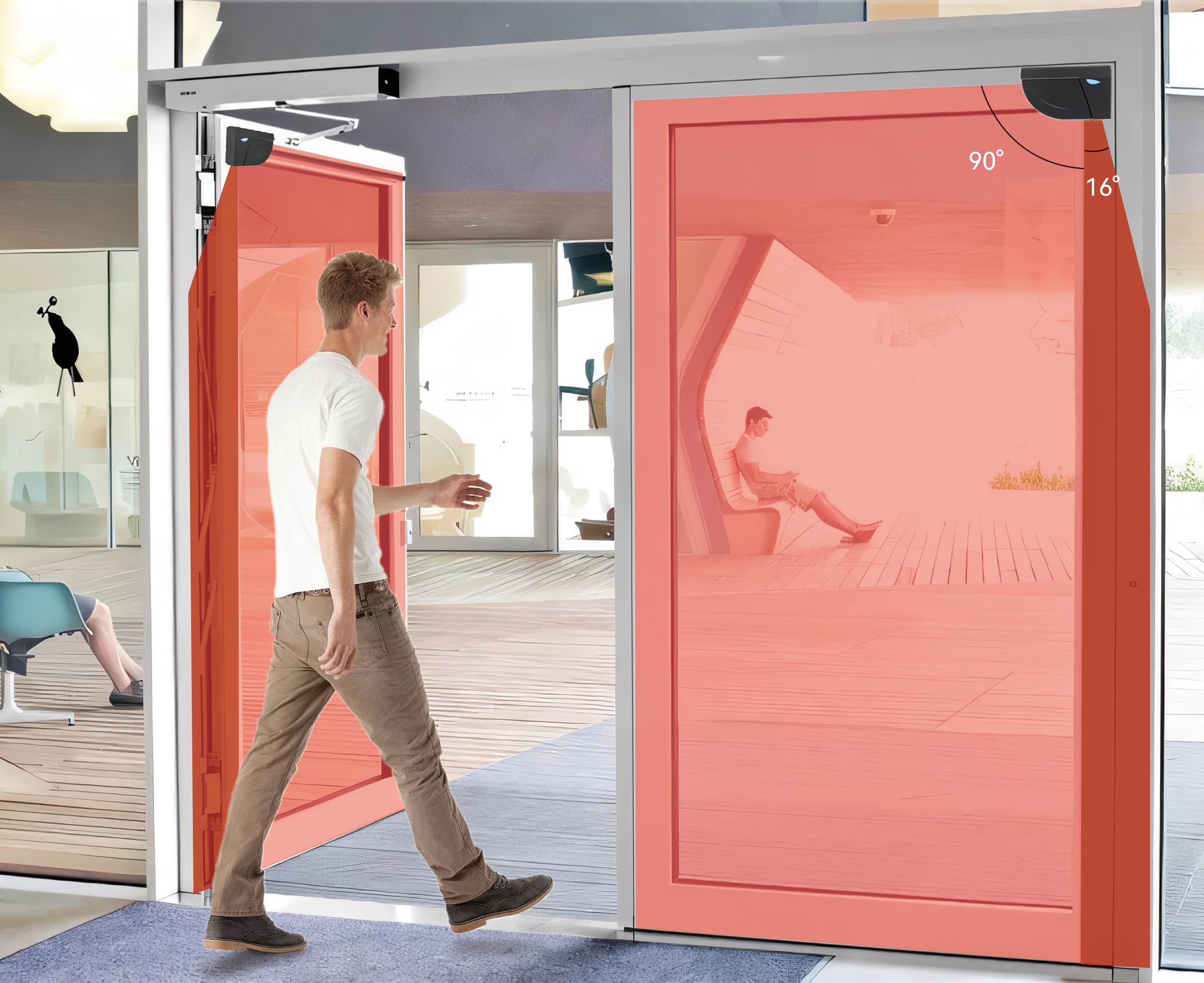What Sensor is Used in Automatic Doors?
Automatic doors provide seamless, hands-free access in a variety of public and commercial spaces, thanks to sensors that detect when someone is approaching or standing near the door. These sensors are responsible for activating the door’s motor system, allowing it to open and close automatically. Several types of sensors can be used in automatic doors, each suited to specific applications and environments. In this article, we'll look at the most common sensors used in automatic doors and how they work.

1. Motion Sensors
Motion sensors are among the most widely used sensors in automatic doors and are designed to detect movement within a certain range. They are highly responsive, making them ideal for high-traffic areas like shopping malls, airports, and office buildings.
- Infrared (IR) Sensors: IR sensors detect the presence of warm objects by sensing the infrared radiation emitted by people or animals. When someone enters the sensor’s detection zone, the sensor triggers the door to open. IR sensors are highly effective at close range, making them suitable for entrances where the door needs to open when a person is in close proximity.
- Microwave Sensors: Microwave sensors emit microwave signals, which reflect off moving objects and return to the sensor. By measuring these reflections, the sensor can detect movement and signal the door to open. Microwave sensors are more sensitive than IR sensors and can detect movement from greater distances, making them ideal for high-traffic or large entryways.
2. Proximity Sensors
Proximity sensors detect the presence of a person or object without requiring actual movement. This is useful in environments where the door should remain open as long as someone is nearby, such as hospital entrances or accessibility zones where users may need extra time.
- Capacitive Proximity Sensors: Capacitive sensors measure changes in the electric field near the door. When a person or object enters this field, the sensor detects the change and opens the door. These sensors are often used in applications requiring precise control, as they can be adjusted for sensitivity.
- Ultrasonic Sensors: Ultrasonic sensors emit sound waves that bounce back when they hit an object, and the sensor detects the echo to determine if something is present. These sensors are effective in detecting people or objects within a set range and are less affected by lighting or environmental changes than other sensor types.
3. Pressure Sensors
Pressure sensors are another option for automatic doors, particularly older models, and are still commonly used in certain commercial applications. They work by detecting weight on a mat or pad near the door.
- Pressure Mats: Pressure sensors are typically embedded in floor mats placed at the entrance of the door. When someone steps on the mat, the sensor detects the weight and signals the door to open. These mats are durable and often used in industrial or heavy-duty settings. However, pressure sensors are gradually being replaced by other sensor types that offer more flexibility and range.
4. Optical (Laser) Sensors
Optical or laser sensors use light beams to create a detection field near the door. When an object or person interrupts the beam, the sensor activates and opens the door.
- Laser Sensors: These sensors use infrared or laser light to detect objects within a specific range. Laser sensors are highly accurate and can be configured to detect very specific zones, making them useful in areas where precision is important, such as in automated warehouses or facilities with high-security needs.
- Photoelectric Sensors: Photoelectric sensors work similarly to laser sensors by emitting a light beam across a defined area. When someone crosses the light beam, it triggers the door to open. These sensors are often used for industrial applications where safety is paramount, as they can detect if someone is in the door’s path.
5. Combination Sensors
Many modern automatic doors use a combination of sensors to improve reliability and safety. For instance, a door might have both a microwave motion sensor and an infrared sensor. The microwave sensor detects movement from a distance, prompting the door to prepare to open, while the infrared sensor verifies that a person is within range before fully opening. This combination ensures that the door opens smoothly and closes only when it’s safe.
Choosing the Right Sensor for Your Automatic Door
The ideal sensor depends on factors like traffic volume, environment, and specific requirements. Here’s a quick guide to sensor types based on application:
- High-Traffic Areas: Microwave sensors are preferred because of their ability to detect movement from a distance and handle large volumes of people.
- Precision or High-Security Needs: Laser or photoelectric sensors provide a high degree of accuracy and can be configured to detect specific areas, making them suitable for secure facilities.
- Accessibility Entrances: Proximity sensors, such as capacitive sensors, are useful in areas where the door needs to stay open longer to allow for slower-moving individuals.
- Industrial Settings: Pressure mats and photoelectric sensors are commonly used in heavy-duty or industrial settings where safety and durability are priorities.
Conclusion
Automatic doors rely on various sensors to function smoothly and safely. Motion sensors, proximity sensors, pressure sensors, optical sensors, and combination systems each bring their strengths, allowing doors to cater to the needs of different environments. By using the right type of sensor, automatic doors can offer enhanced convenience, safety, and efficiency in any setting.







